#paleoart inspiration
Text
Croc colours and patterns
Somewhat inspired by a recent post by Joschua Knüppe, I feel like it's a good thing to remind people just how diverse colours and patterns in modern crocodilians are. When I see people make art, it often seems to stick to grey or yellowish-brown tones, which is of course not incorrect. But theres a lot of, imo, underappreciated variety still. It's also worth noting beforehand that patterns are most striking in younger individuals and naturally become more muddy the older and larger an animal becomes. But as you will see, even some decently large and old animals may maintain a striking appearance.
Take this alligator for example. Gators tend to be on the darker side, dark greys to black, sometimes countershaded and sometimes pretty consistent. Some individuals, like this one photographed by Gar Luc, still retain clearly visible stripe patterns from when they are younger.
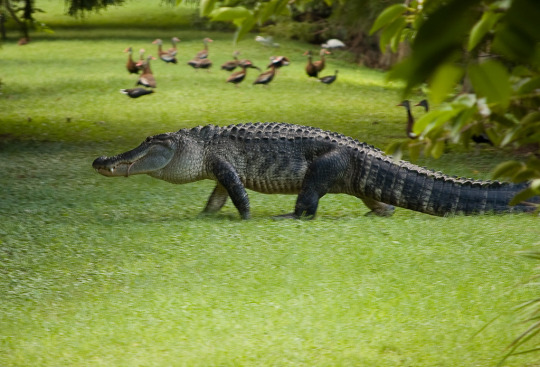
Or take one of my favourite species, the Cuban Crocodile, which can appear almost bright yellow with a dense pattern of leopard spots. Of course like with the gator you can find individuals that are much more drab, with washed out colours, but individuals with clearly defined patterns still exist.

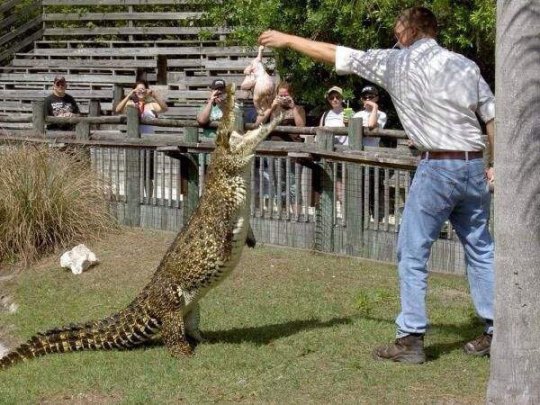
Then there's gharials of course. They can range quite a bit in colouration. They can be brown, especially younger ones and females and I've seen males range in colour from a drab grey to almost a light blue or even something that could be described as metalic black.
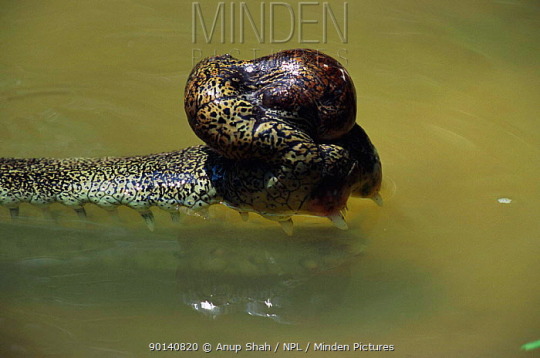


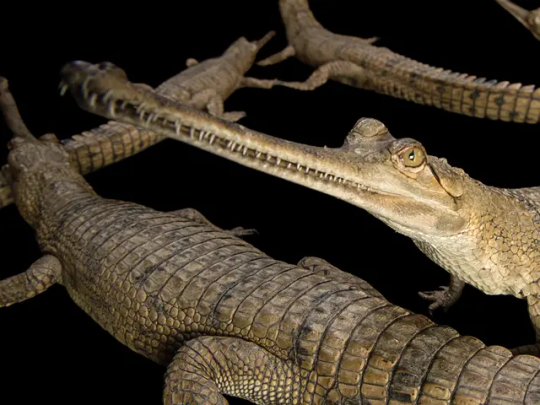
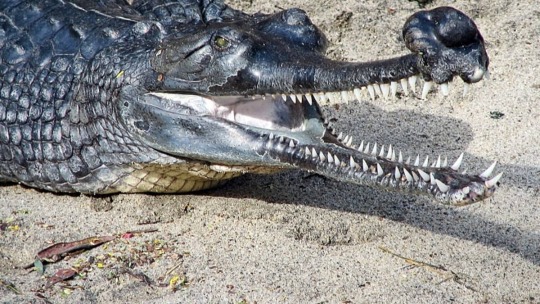
Black Caimans are also pretty interesting in my opinion and pretty easy to tell apart from other species once you pay attention to their colour. They are primarily a deep dark black of course, but what sets them apart from spectacled and other caimans is that very fine pattern of thin white stripes across the flanks that creates this beautiful contrast. They can also have patches of brown like the one on the right.


Orinocos also vary a great deal. Tho I know less about them than I wish I did, I know that individuals can range from drab brownish greys to yellow to somewhat earthy browns that almost range into reds.
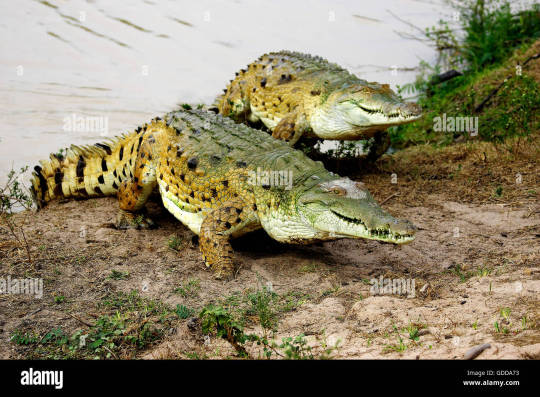
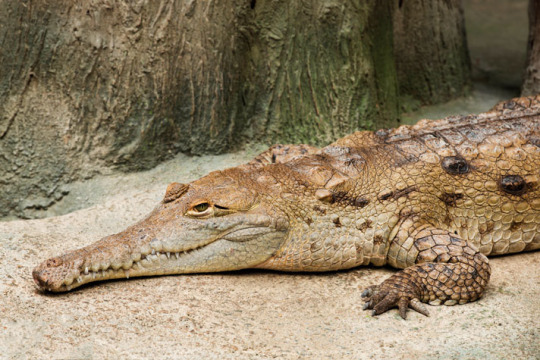
The next ones a bit of an outlier. There are specific cave dwelling dwarf crocodile populations in western Africa with striking orange colouration. Tho this one is not exactly natural pigmentation to my knowledge and instead the result of the chemicals present in the water they inhabit, brought there by bat guano. Still very pretty animals.
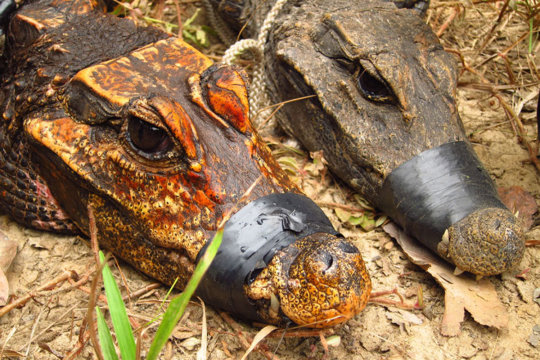
And then there's Paleosuchus, the dwarf caiman which contains two species. Again highly varied. The first image, which I believe is a Schneider's dwarf caiman, shows a very earthy brown. The others, which unless I'm mistaken are Cuvier's dwarf caimans, show colours ranging from dark with a rusty head, black to this still beautifully patterned individual. Of course these variations are also subject to change with age.



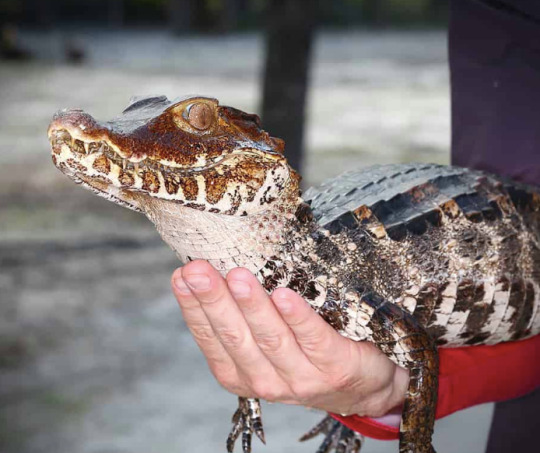
While salties aren't exactly known to be the most vibrant, I'd be remissed if I didn't mention this specific one. It's kept in a zoo in Germany and has this almost bizarre colour combination of creamy white underbelly and chocolate brown top which I've never seen in another saltwater crocodile. Photos by my friends Markus Bühler from the Bestiarium blog and René Dederich

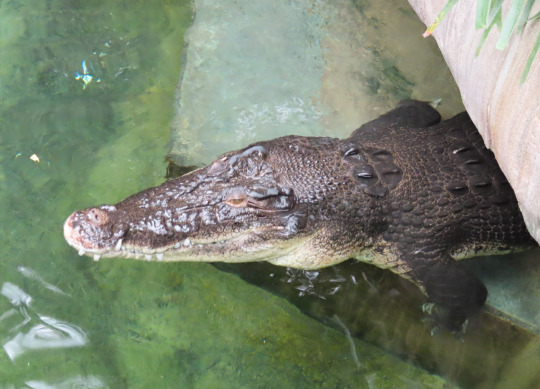
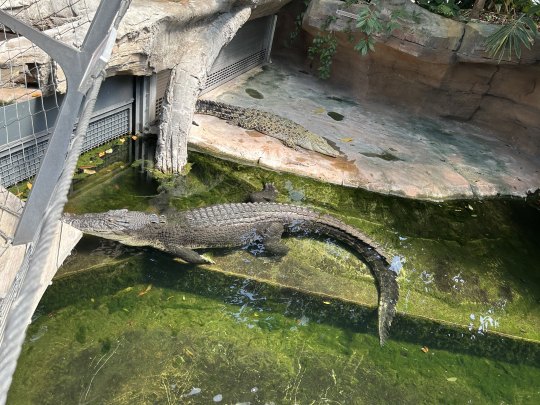
Spectacled, Broad-snouted and Yacare caimans I'll give a quick shout out. I think most people are familiar enough with how they look like and while their colours aren't anything special, I still think one should appreciate their patterns of spots and stripes and facial markings.

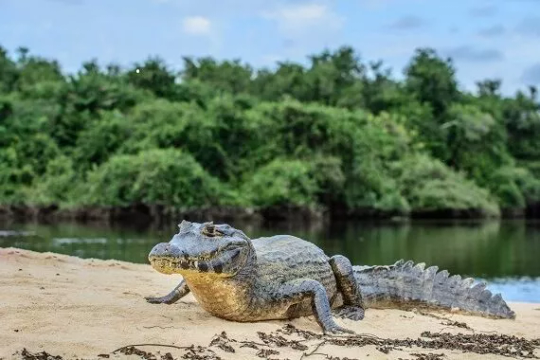


The last one I wanna highlight is the false gharial, Tomistoma, another one of my favourites. Part of the reason why being its at times beautiful reddish-brown colours.
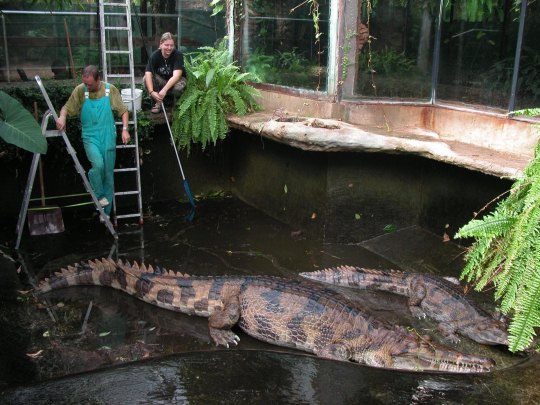
#crocodiles#crocs#gharial#gator#alligator#crocodilian#herpetology#reference#colours#inspiration#paleoart inspiration
2K notes
·
View notes
Text
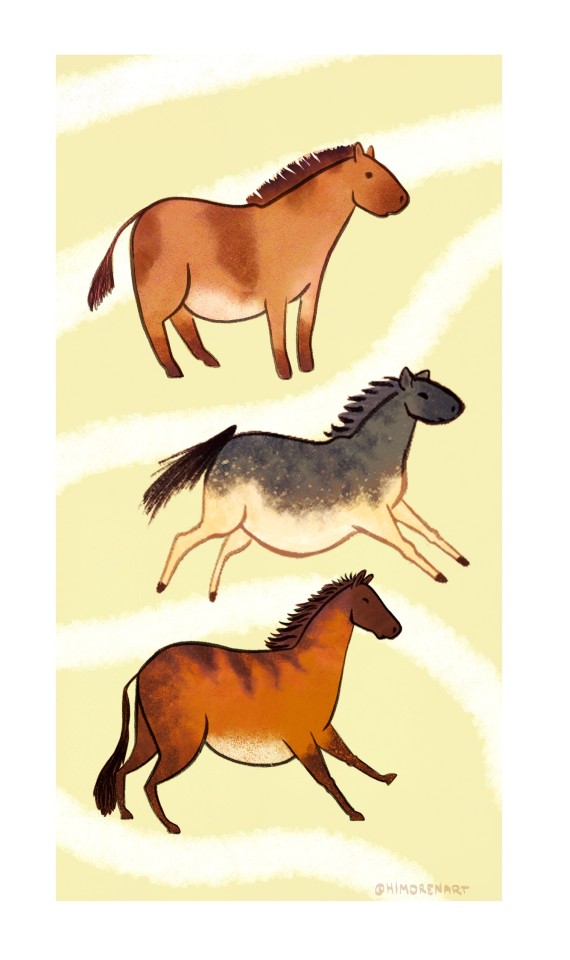
Doodles of my favorite horses on cave walls!
#himorenart#digital art#illustration#sketches#horse art#ancient horses#cave art#cave painting inspired#paleoart#what if i printed these on shrinky dinks and made horse earrings???
3K notes
·
View notes
Text

Blessed with two minds.
Cursed to never use them.
#saw an x-ray of a two headed fawn last night and inspiration hit me like a truck#my art#art#skeleton#animal skeleton#dromaeosaur#dinosaur#dinosaur art#paleoart#tw animal death#cw animal death#tw skeleton#cw skeleton#tw death#cw death
2K notes
·
View notes
Text

Shake shake
#my art#raptor#velociraptor#paleoart#paleo art#dinosaur#you guys seemed to like the other little friends I posted and they were fun to draw so#here’s another heheh#art hack: draw dino. look up some random bird. take inspiration.#also if anyone has any requests or stuff like that feel free to send them lol
2K notes
·
View notes
Text

#art#paleo art#paleoart#art inspiration#prehistoric#paleontology#dinosaurs#dinosaur#dino#art ideas#art inspo#inspirational
595 notes
·
View notes
Text

💖adopt a pony💖
new batch!!
1️⃣5️⃣ each!
DM to claim
reblogs appreciated🙏
#adopts#adoptables#toyhouse#the land before time#dinosaurs#tricer#paleoart#my little pony#mlp fim#friendship is magic#fish#salmon#splatoon#inspired#giraffe#pokemon#my art
246 notes
·
View notes
Text
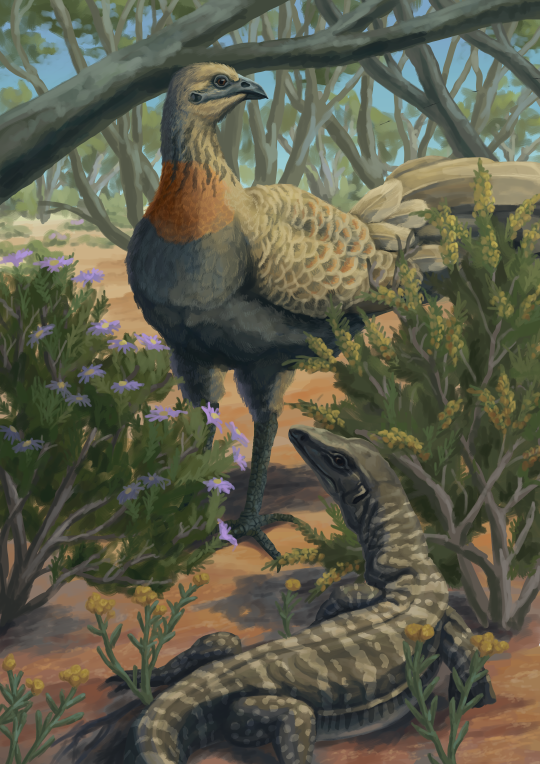
Progura campestris, a pleistocene megapode bird calls to intimidate a varanid who is approaching where she has just buried her eggs
#this was inspired by me getting shouted at by a malleefowl lol#bird#palaeoart#paleoart#bird art#varanidae#goanna#monitor lizard#mallee
215 notes
·
View notes
Text
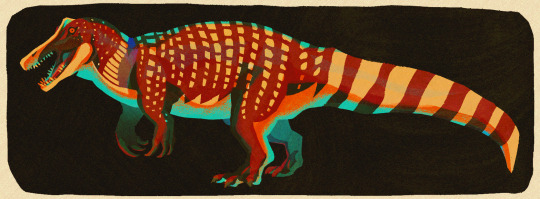
irritated
(more versions under the cut)
+ flat and b/w
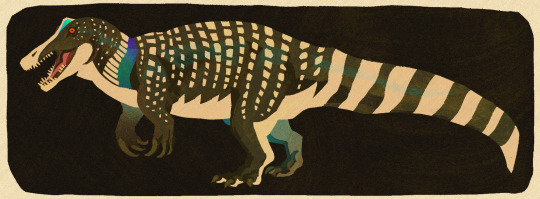
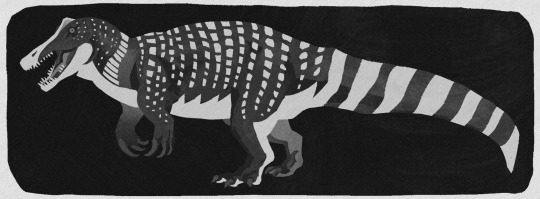
and as a bonus heres the dookie original drawing made baaaaack in 2022....#improving. its got a charm to it despite it all
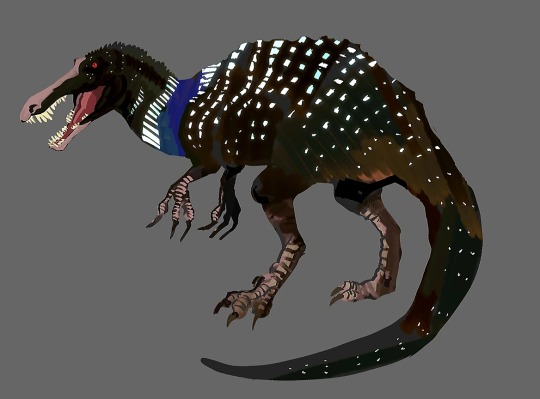
#coloration inspired by the loon. awesome beasts#irritator belongs to brazil#eyestrain#i hope he will join ubirajara one day#irritator#irritator challengeri#art tag#paleo tag#paleoart#eye strain#dinosaurs#bright colors#dinosaur
180 notes
·
View notes
Text

“On the back of a giant”
#illustration#worldbuilding#fantasy#fantasy universe#fantasy world#creature design#science fiction#art#procreate#paleoart#paleo#paleontology#trilobite#horseshoe crab#crab#crustaceans#insects#bugs#prehistoric animals#inspired by#moebius#ghibli
141 notes
·
View notes
Text

im workin on other stuff but look I drew my first ever azhdarchid by the way do you know how hard it is to spell azhdarchid i still don't know this is all a copy/paste on my part.
anyway enjoy this goofy little guy. I love them.
#azhdarchid#paleoart#pterosaur#art#my art#illustrations#my illustrations#in real life i am terrified of these things#but not as terrified as i am of sauropods#but the one in prehistoric planet was so well done#it gave me an actual sense of fear#and i began to wonder if the ancient memory of azhdarchids#stomping around the forests scooping up small prey to eat#isnt what inspires the ideas of siren head or slender man#these tall skinny hulking silent creatures in the woods#standing tall and able to snatch us up#yeah i think azhdarchids left a primal genetic imprint of fear in us#theyre just that powerful#anyway enjoy this goofy guy :3#and thanks for reading my tags
69 notes
·
View notes
Text
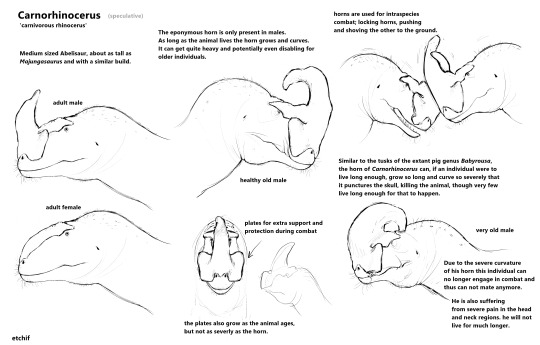
Carnorhinocerus, the Carnivorous Rhinocerus
#name obviously inspired by the one and only.#etchif art#speculative evolution#speculative paleontology#peculative biology#paleontology#dinosaurs#abelisaurs#paleoart#kind of#paleoblr#palaeoblr#spec evo#spec bio#spec paleo
182 notes
·
View notes
Text
totally tubular~
quetzalcoatl and rider doodles

#palaeoblr#paleoart#pterosaur#quetzalcoatl#azhdarchid#i hope i spelled that right#dinopocalypse#check it out they’re riding dinosaurs#not supposed to be in any fandom#but i do like both ark and dinotopia#so i suppose that’s inspiration#pterosaurs#azhdarchidae#my art#digital art#dinosaur#dinosaurs#i know it’s not really#fantasy#skybax
752 notes
·
View notes
Text

Falcatamacaris bellua is not, as it may seem at first glance, a fictive trilobite designed by a 6-year old, but a large (~10 cm) arthropod from the Weeks Formation (early Cambrian) notably distinguished by curved pleural spines (giving it its name*), a weakly biomineralized cuticle, and an unwillingness to be classified precisely.
Bonus views of the quick 3D model I made as a drawing reference:


References and notes:
*name which, by the way, is based on an incorrect use of the latin falcatus,-a,-um in its unexplainably inflected form falcatam, which exasperates me disproportionately (name should be Falcatacaris (how did the reviewers not give them shit for that mistake?)) (i am experiencing several taxonomy-related annoyances these days (perhaps i just need something inconsequential on which to take out my anger (anyway))).
Available fossil material of Falcatamacaris only features the dorsal carapace along with limited evidence for 3 cephalic pairs of limbs (but apparently no antennae) (Ortega-Hernández et al. 2015). The walking appendage morphology and arrangement depicted here is therefore only speculative and based on a generalized artiopodan (a broad group including trilobites and friends, within which Falcatamacaris has an uncertain position), after Sein & Selden (2012).
References:
Ortega-Hernández, J., Lerosey-Aubril, R., Kier, C., & Bonino, E. (2015). A rare non-trilobite artiopodan from the Guzhangian (Cambrian Series 3) Weeks Formation Konservat-Lagerstätte in Utah, USA. Palaeontology, 58(2), 265–276. https://doi.org/10.1111/pala.12136
Stein, M., & Selden, P. A. (2012). A restudy of the Burgess Shale (Cambrian) arthropod Emeraldella brocki and reassessment of its affinities. Journal of Systematic Palaeontology, 10(2), 361–383. https://doi.org/10.1080/14772019.2011.566634
#mild taxonomic pissiness#just another Junnn11-inspired piece before getting back to serious business#as a treat#falcatamacaris#artiopod#arthropod#cambrian#paleozoic#paleontology#palaeoblr#paleoart#my art
48 notes
·
View notes
Text

Something I made for my mom for mother’s day yesterday.
#my art#art#dinosaur#artists on tumblr#paleoart#dinosaurs#paleontology#traditional art#watercolor#gouache#parasaurolophus#hadrosaur#art nouveau#art nouvaeu inspired#mother’s day#post mother’s day#mother’s day gifts
199 notes
·
View notes
Text

wip
68 notes
·
View notes
Text

Also just realized i never posted this
Mother ground sloth carrying her child on her back.
#paleoart#cenozoic#ground sloth#Megatherium#sloth#i guess???#i love ground sloths so much wish modern sloths went this hard#i guess we have anteaters for that#also the colors on this were inspired by anteaters also the carrying young on her back is a behavior in anteaters and sloths#so i think its reasonable to believe ground sloths also did this#and more importantly its cute#also i have beef with the ice age sloth for gaslighting society into thinking anceint sloths werent cool#dragon draws creatures
26 notes
·
View notes